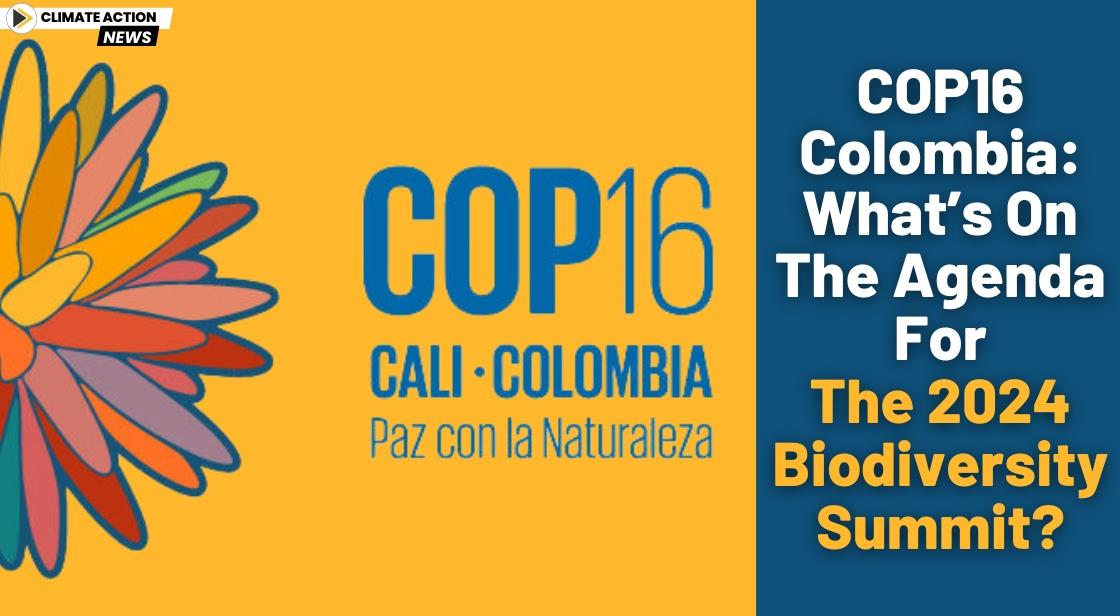COP16 Colombia: What’s on the Agenda for the 2024 Biodiversity Summit?

News Synopsis
As the world continues to grapple with the twin crises of climate change and biodiversity loss, attention shifts to the UN Biodiversity Summit COP16, taking place in Cali, Colombia, from October 21 to November 1, 2024. The summit will gather representatives from nearly 200 countries to debate and devise strategies to protect the natural world from further destruction, as the rapid degradation of ecosystems and species extinction reach alarming levels.
The conference will focus on implementing the Kunming-Montreal Global Biodiversity Framework established in 2022 and will assess progress made on key goals such as conserving 30% of the planet by 2030 and reducing harmful subsidies. With genetic information and Indigenous community rights also high on the agenda, the outcomes of COP16 could shape the future of global conservation efforts.
National Action Plans: Monitoring Progress on Biodiversity Commitments
Countries attending COP16 are expected to submit their National Biodiversity Strategies and Action Plans (NBSAPs), detailing how they plan to meet the ambitious targets set under the Kunming-Montreal Global Biodiversity Framework. These plans will be scrutinized for their effectiveness in preserving nature and safeguarding biodiversity.
The global goals include the protection of 30% of terrestrial and marine areas by 2030, cutting down subsidies that harm nature, and mandating businesses to report their environmental impacts. Delegates will evaluate the progress made since the COP15 summit in 2022 and identify priorities to accelerate conservation actions.
Genetic Information: Regulating Access to Digital Genetic Data
One of the key debates at COP16 will center around the use and sharing of digital sequence information (DSI) derived from plants, animals, and microbes. While earlier laws, such as the Nagoya Protocol, focused on regulating physical samples, advancements in technology now allow the sequencing of genomes in a matter of hours. This has led to an explosion of genetic data being shared digitally, often without direct ties to the original biological material.
Negotiators are expected to finalize a deal on the global regulation of DSI, which would include establishing a multilateral system for paying for access to this data. This would help clarify when payments are required, by whom, and where the funds will go. A clear framework could reduce legal uncertainties faced by companies working with genetic sequences, particularly in industries like pharmaceuticals, agriculture, and cosmetics.
Indigenous Communities: Amplifying Traditional Knowledge
Colombia, the host of COP16, has placed a strong emphasis on including Indigenous and traditional communities in biodiversity conservation discussions. Indigenous groups, especially those in voluntary isolation, play a crucial role in protecting ecosystems, and their traditional knowledge is vital for sustainable environmental management.
The summit is expected to finalize a program that integrates traditional knowledge into national conservation plans. Furthermore, discussions around creating a permanent body for Indigenous issues will aim to ensure that these communities have a voice in UN biodiversity decision-making.
Boosting Finance: Addressing Funding Gaps for Biodiversity
A significant challenge for global biodiversity efforts has been the funding shortfall. At COP15 in Montreal, wealthy nations pledged to provide at least $20 billion annually by 2025, increasing to $30 billion by 2030, to help developing countries meet their conservation goals. However, as of 2022, biodiversity aid only reached $15.4 billion, still below the required levels.
At COP16, governments and private sector representatives are expected to announce additional funding initiatives. Discussions will also focus on developing innovative mechanisms for channeling money towards biodiversity projects and nature conservation.
Overlaps with Climate Change: Addressing Two Crises Together
Though traditionally handled as separate issues, biodiversity loss and climate change are increasingly being tackled as interconnected crises. Protecting and restoring ecosystems helps curb climate change by acting as carbon sinks, while global warming exacerbates biodiversity loss.
COP16 is poised to highlight the synergies between climate action and biodiversity protection and raise the urgency of addressing both simultaneously. These discussions will also set the stage for November’s COP29 Climate Summit in Baku, Azerbaijan, where the role of nature in mitigating climate change will be a key point of focus.
Conclusion:
The COP16 Nature Summit in Colombia marks a pivotal moment in the global effort to reverse the alarming rate of biodiversity loss. With nearly 200 countries coming together, the summit will focus on implementing national action plans, regulating access to digital genetic data, securing greater inclusion of Indigenous communities, and closing the financing gap for biodiversity conservation.
As the world confronts the intertwined crises of climate change and nature loss, COP16 presents a vital opportunity to not only evaluate progress but also forge new agreements that will shape the future of global environmental protection. The decisions made at COP16 will be instrumental in ensuring that the Kunming-Montreal Global Biodiversity Framework goals are met and that the natural world is preserved for future generations.
You May Like









